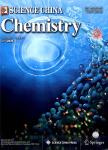ISOLATION,CHARACTERIZATION AND EXPRESSION OF THE COMPLEMENTARY DNA FOR HUMAN TUMOR NECROSIS FACTOR (TNF-α)
ISOLATION,CHARACTERIZATION AND EXPRESSION OF THE COMPLEMENTARY DNA FOR HUMAN TUMOR NECROSIS FACTOR (TNF-α)作者机构:National Laboratory of Molecular Oncology Cancer Institute Chinese Academy of Medical Sciences Beijing 100021 PRC Insitute of HepartitisBeijing Army General HospitalBeijing National Laboratory of Molecular Oncology Cancer Institute Chinese Academy of Medical Sciences Beijing 100021 PRC A cDNA for human TNF-α(615bp) was isolated by means of polymerase chain reaction (PCR) using first strand cDNA from PMA-induced HL-60 cells as template. The result from sequencing the 615 bp cDNA fragment indicated that it corresponded to the entire sequence of mature human TNF coding region. Direct expression of mature human TNF was achieved using a plasmid pHT-1 constructed by ligation of the cDNA and a synthetic DNA. The IPTG-induced bacterial product (hTNF) showed cytotoxicity to mouse L-929 cells. The TNF activity was further identified by neutralization of a specific monoclonal antibody against human TNF-α. Approximately 80000 units of activity were detected per ml of culture at A600=2.
出 版 物:《Science China Chemistry》 (中国科学(化学英文版))
年 卷 期:1990年第33卷第10期
页 面:1210-1217页
核心收录:
学科分类:0810[工学-信息与通信工程] 0830[工学-环境科学与工程(可授工学、理学、农学学位)] 07[理学] 0708[理学-地球物理学] 0805[工学-材料科学与工程(可授工学、理学学位)] 0703[理学-化学] 0704[理学-天文学] 0812[工学-计算机科学与技术(可授工学、理学学位)]
主 题:human tumor necrosis factor(hTNF) polymerase chain reaction(PCR) gene cloning gene expression Escherichia coli
摘 要:A cDNA for human TNF-α (615bp) was isolated by means of polymerase chain reaction (PCR) using first strand cDNA from PMA-induced HL-60 cells as template. The result from sequencing the 615 bp cDNA fragment indicated that it corresponded to the entire sequence of mature human TNF coding region. Direct expression of mature human TNF was achieved using a plasmid pHT-1 constructed by ligation of the cDNA and a synthetic DNA. The IPTG-induced bacterial product (hTNF) showed cytotoxicity to mouse L-929 cells. The TNF activity was further identified by neutralization of a specific monoclonal antibody against human TNF-α. Approximately 80,000 units of activity were detected per ml of culture at A600=2.



